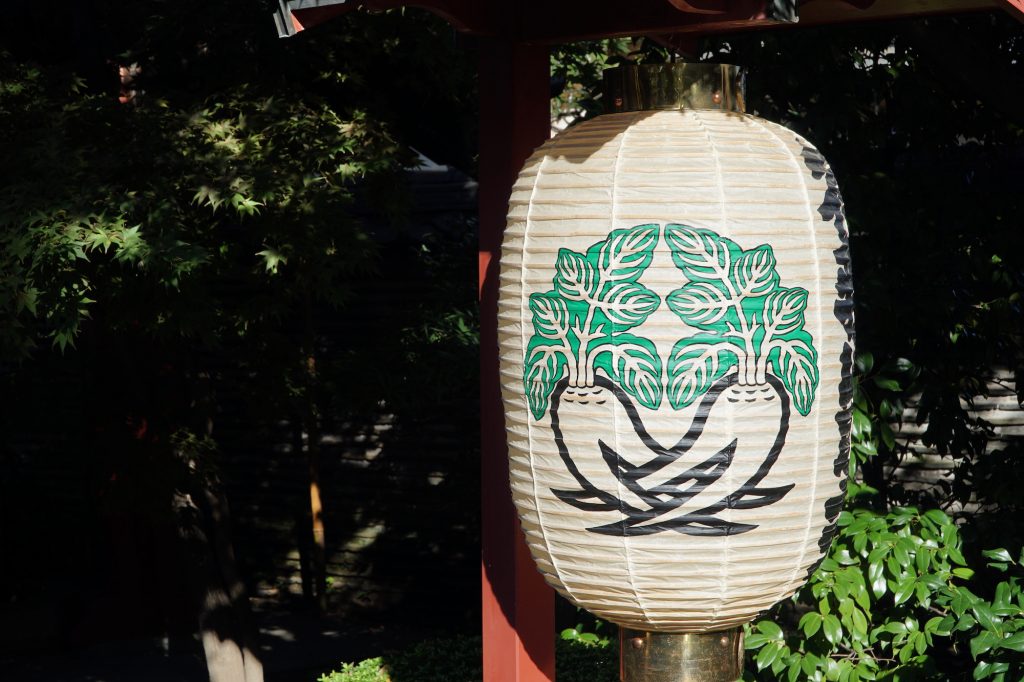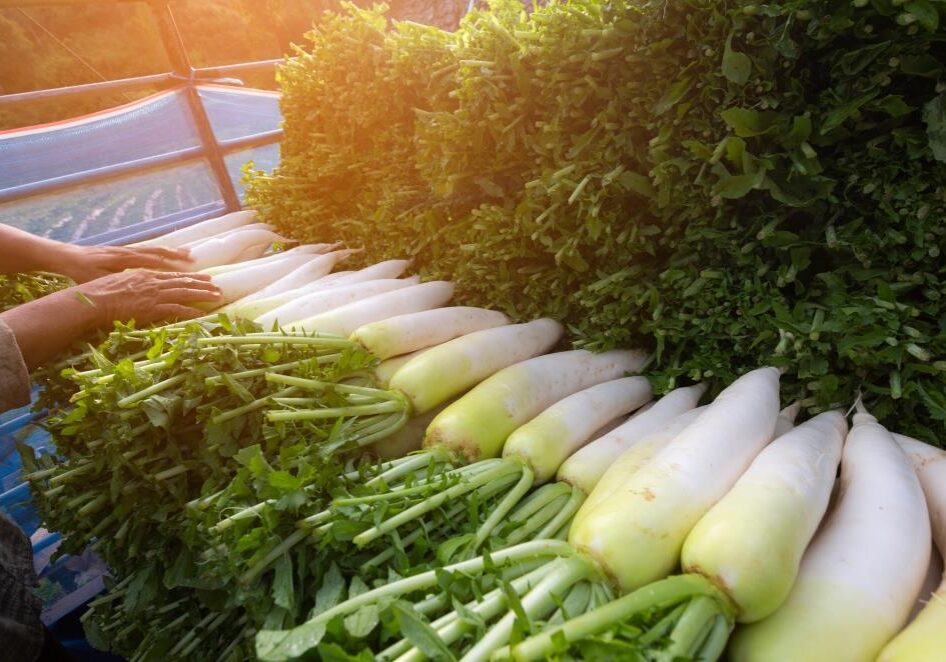What is daikon radish? If you’re unfamiliar with Asian cuisine, you may be drawing a blank on this one. You wouldn’t be the first – or the last – to be stumped by this versatile vegetable. That’s because there’s much more to a daikon radish than meets the eye. Beyond being a major source of sustenance, the daikon radish also holds a deeper meaning in many parts of the world. We believe this is an important distinction. Understanding and celebrating the history behind traditional ingredients can mean the difference between sitting down to a run-of-the-mill, midweek dinner or enjoying a new, eye-opening cultural experience.
What is Daikon Radish – Vegetable, Superfood, or Cultural Symbol?
The answer is all three.
Vegetable
Daikon radish is a winter vegetable usually sown in mid-to-late summer and harvested in the cooler seasons. Available in a wide range of shapes and colors, this cruciferous veggie boasts a characteristic crispness and snap when served raw, but softens as it cooks, much like a potato.
To assess how the flavor of daikon radish compares to the more well-known red radish, we sought out Chris Glab, wildbrine’s co-founder. Wildbrine uses daikon radish in two of its kimchis, Miso-Horseradish and Mild Kimchi. Glab described the flavor of daikon radish as “much milder than its peppery cousin, the red radish,” adding that wildbrine uses daikon radish to “deliver a slightly sweet, nutty taste and a fantastic crunch” to its Japanese-inspired kimchi varieties. He went on to say wildbrine is committed to ingredients that “deliver flavor first,” while at the same time, pointing out the notable health benefits associated with daikon radish.
Superfood
Daikon radish has been referred to as a superfood for good reason. Low-cal, low-carb, and high in fiber, this natural, whole food is a no brainer when it comes to maintaining a healthy weight and aiding digestion. Touted by healthline.com as both an antioxidant and anti-inflammatory, daikon radish is packed with essential nutrients: calcium, magnesium, potassium, copper, vitamin C, and folate. A powerhouse among healthy foods, the nutritional properties of daikon radish are often associated with enhanced cellular and tissue growth, red blood cell production, and immune system function. Working in concert, these health benefits are thought to form a significant protective barrier against heart disease, diabetes and certain cancers.
Aside from its well-documented medicinal and nutritional properties, there are also other reasons daikon radish is cultivated so widely throughout Asia. When we googled “What is daikon radish used for besides cooking?” we got some unexpected answers. It turns out that collagen-boosting seed oil made from daikon radish is used in the manufacture of commercial products, such as cosmetics. And the crop’s extensive root system, which loosens compacted earth and releases nutrients and nitrogen as it decomposes, makes it particularly useful as a cover crop tasked with improving overall soil health.

Cultural Symbol
Along with its nutritional, commercial, and agricultural value, daikon radish is also prized in the Far East as a source of spiritual renewal. Originally grown along the Mediterranean Coast, this prolific root vegetable was carried along ancient trade routes into China, and later into Japan, and Korea, where according to gardenerspath.com, it quickly became a mainstay of Asian cuisine. Heavy and dense, some varieties reach up to 2 feet in length. Hence, the name “daikon,” which means “large root” in Japanese.
Daikon radish is considered by many to be a detoxifying agent for both the mind and body. Nowhere is this more apparent than at the Buddhist Matsuchiyama Shoden Temple in Tokyo. Images of daikon radishes, which are thought to represent purity, adorn the walls. And the prized root is the centerpiece of many cleansing rituals. Cooked daikon radish is served at annual celebrations, and visitors searching for a clean slate and fresh start are invited to leave offerings of the healing root on the temple’s altar.
What is Daikon Radish Served with in Asian Cuisine?
If not best-in-class, daikon radish most certainly deserves an honorable mention for its contribution to Chinese, Korean, Japanese, Indian, and Southeast Asian cooking. Pleasantly sweet and spicy, its subtle flavor pairs well with beef, pork, poultry, or fish, as well as with a variety of more potent herbs. Served raw, pickled or cooked, the fleshy root and its dark green leaves add a fulsome, comforting element to a wide assortment of entrées. For a surprisingly satisfying bite, try grating it over a salad, stuffing it into spring rolls, or adding it to stir-fries, soups, stews, and curries. Pickled or fermented in a veggie mix, daikon radish makes for a tart, tangy sandwich- or Buddha-bowl topper, as well as a bright, palette-cleansing side dish. Or simply slice it up raw to serve at the end of a meal as a crispy, crunchy digestive aid.
For more insights into the ins and outs of cooking with daikon radish, we recommend checking out Chopstick Chronicles for tips on how to choose the perfect specimen, which parts of the plant to use for which purposes, how to store and prepare it – and best of all, how to incorporate it into a host of well-loved Japanese recipes.
Sometimes, the best things in life are those with the most staying power. If you’re searching for your next, great tasting adventure, why not start with authentic, traditional ingredients, like those found in wildbrine’s kimchis. These culinary gems have survived the test of time.
